The term “double header” stems from the old-time practice of professional baseball teams playing two games, back to back, on Sundays and holidays. A fan could go to the stadium, pay his admission and see two games in one day for the price of one. As a teenage baseball fan of the Philadelphia A’s and Phillies I would get on the train at my home town, ride to North Philadelphia train station from which it was about a one-mile walk to Shibe Park, later renamed Connie Mack Stadium, where both teams played.
On the way, I was first exposed to the small time extortion practice of local youngsters who would approach a fan just parking his car curb-side and offer to “Watch your car during the game for a quarter to make sure nothing happens to it, Mister?” On the walk back to the train station after the game we could easily observe the cars where the owners had failed to pay the requested quarter, for they clearly had a flat tire. Apparently, some drivers were particularly nasty to the local kids, for their cars might have two or more flat tires.
The baseball double header experience was memorable as I was fortunate to see such old-time greats as Ted Williams, Joe DiMaggio, Bob Feller, Stan Musial, Willie Mays, and of course, Philly’s own Robin Roberts. Today, baseball teams sometimes play two games in the same day, but fans are required to leave the stadium and return later for the second game after also paying a second entry fee.
A recent birding excursion to Merritt Island National Wildlife Refuge provided a birding “double header.” Shortly after starting around Black Point Drive we encountered a group of birders already gathered together observing a Great White Pelican (top) mixed in a large flock of American White Pelicans. While watching and photographing this life bird for both of us, other birders in the previously gathered group informed us that just a short distance ahead there was a male Cinnamon Teal (photo 2) in with a small flock of Blue-winged Teal, but unlike the Cinnamon Teal we saw there in the fall at about the edge of telescope distance, this one was quite close and easy to see. Two great birds in quick succession and all for the price of one trip! Clearly a birding “double header!”
Seen side by side with our native American White Pelican, (photo 3) the alien undocumented Eurasian African illegal immigrant fence jumping Great White Pelican is significantly larger than our local pelicans. (photo 4) Research disclosed that the Merritt Island invader is a female Great White Pelican just coming into breeding plumage. The orange facial skin distinguishes it from the male which would be sporting bright pink facial skin. Significantly, the male would be almost a foot taller than the female and considerably bulkier. One can only imagine how much more a male Great White Pelican would tower over our native white pelicans. In fact, the wingspan on a male Great White Pelican can reach almost 12 feet, second only to the Great Albatross for the world record. (photos 5 and 6)
While Cinnamon Teal is not a foreigner like the Great White Pelican, it is a resident of the west coast of North America and Mexico and seldom found in Florida. It is closely related to the Blue-winged Teal, with which it often flocks in the winter. (photo 7) In fact it sometimes hybridizes with the Blue-winged Teal and sports the same blue wing patch which can be seen when it flies or stretches. (photo 8) As might be expected, the pelican is a fish eater specializing in one to one-and-a-half pound fish. In its native Africa, tilapia are a favorite of its diet, so presumably our visitor felt right at home with the invasive tilapia now found in Florida waters providing a form of home “cooking.” On the other hand, Cinnamon Teal are primarily a seed and weed eater, dabbling in water just shallow enough that they can reach the bottom without diving. Sometimes they resurface with some of their meal still dangling from their shovel shaped beaks. (photo 9)
Birding double headers like this one are actually fairly rare. Some of our birding friends create their own form of birding double headers by setting up bird chasing trips only when there are two or more rare birds to chase in one area so that the time and expense of taking a long flight are worth the effort.
For example, only this past winter two friends came to Florida to chase both the Antillean Palm Swift and a La Sagra’s Flycatcher which they had missed on an earlier occasion. However, while the birds were found on the same trip, they were located on separate days, not 20 minutes apart like the baseball double headers or our birding double header.
And like some of those old baseball “twofers,” our birding double header will always be memorable. It is special days like these that truly enhance the sport of birding and always give birders something to hope for. Just as I remember the crowd cheering loudly when Ted Williams finally hit a home run against our home team late in the second game of a double header, I am sure I heard the crowd of birders silently cheering the Great White Pelican after giving us an outstanding show and finally taking flight out of the area. And I also bet this is the first time you ever heard of birding being associated with baseball. Nothing like a home run!
For more information on Great White Pelicans, see: en.wikipedia.org/wiki/Great_white_pelican and stokesbirdingblog.blogspot.com/2019/02/great-white-pelican-again-will-she-be.html. For TV video on this bird, see: www.wftv.com/news/local/brevard-county/9-facts-about-great-white-pelicans/EIARGR4AUBB5TI3VKMKV3FMXGU/.
For information on Cinnamon Teal, see: www.audubon.org/field-guide/bird/cinnamon-teal









